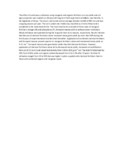Long-term land management effects on crop yields and soil properties in the sub-humid highlands of Kenya

View/
Date
2011-06Author
Kibunja, CN
Mwaura, FB
Mugendi, DN
Wamae, DK
Bationo, A
Language
enMetadata
Show full item recordAbstract
The effect of continuous cultivation using inorganic and organic fertilizers on crop yields and soil agro-properties was studied in a 30-year-old long-term field experiment at Kabete, near Nairobi, in the highlands of Kenya. The area is sub-humid with an average bimodal rainfall of 980 mm and two cropping seasons per year. The soil is a dark red, friable clay classified as a Humic Nitisol and is considered to be moderately fertile. The main treatments consisted of three rates of inorganic fertilizers nitrogen (N) and phosphorus (P), farmyard manure with or without stover restitution. Maize and beans were planted during the long and short rains seasons, respectively. Results indicate that the use of chemical fertilizers alone increased maize grain yields by more than 50% during the first 6 years of experimentation but declined thereafter. Application of combined chemical fertilizers and farmyard manure proved superior to inorganic fertilizers alone and maintained maize yields at 3–5 t ha–1. Farmyard manure also gave better yields than did chemical fertilizers. However, application of chemical fertilizers alone led to decreased maize yields, increased soil acidification from pH of 5.5 to 4.3 and raised bulk density from 1.04 to 10.8 g cm–3 soil. The total % N declined by 25% from 0.16%, while soil organic carbon decreased from 2 to 1.2% after 27 years. Fertilizer N utilization ranged from 25 to 33% but was higher in plots supplied with chemical fertilizers than in those with combined organic and inorganic inputs.
Citation
Innovations as Key to the Green Revolution in Africa 2011, pp 169-174Publisher
Univerisyt of Nairobi
